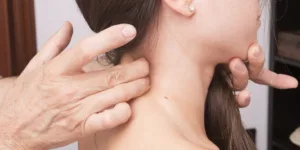With the opioid crisis in full swing, doctors have become increasingly shy about prescribing opiates like Oxycontin to patients in legitimate pain. As a result, much pain goes untreated or under treated. But the consequence of under treatment is an acute pain progressing to chronic debilitating pain.
Which would you rather have, an opiate addiction or constant pain that keeps you from working and enjoying life?
Fortunately, this need not be the choice. Of course, an addiction is easier to manage than chronic debilitating pain. But most pain patients who are prescribed opiates do not go on to develop an addiction. In addition, there are many adjuncts to pain management that make opiate use less necessary.
Medical marijuana
A majority of states now allow the prescription of cannabis and derivatives for medical conditions including pain. Marijuana can often bring the dosage of opiates needed to control pain down dramatically. It also has a reputation as an anxiolytic, a sleep aid, and an appetite stimulant – three uses that are particularly valuable in the pain of metastatic cancer.
Neurostabilizers
Anti-seizure drugs like gabapentin often work well with neuropathic pain. Tricyclic anti-depressants can be effective as well. These are drugs that can be used in addition to standard pain therapeutics like non-steroidal anti-inflammatories (NSAIDs) such as aspirin.
Cortisol
NSAIDs take down swelling and reduce pain. Cortisol is even more effective in reducing inflammation. Although dangerous in the long term, sometimes a dramatic intervention with a shot of corticosteroids can stop intractable pain in its tracks.
Electrostimulation
Microcurrent application and TENS (higher voltage current therapy) can be effective in pain, especially pain associated with muscle tension and spasms.
Stem cell therapy
An exciting new field of pain management is stem cell therapy. Stem cells are extracted and purified from a patient’s own bone marrow and implanted into damaged areas like joints and cartilaginous surfaces. Physicians like Dr. Leon Reyfman, a Brooklyn-based board-certified pain management physician, specialize in the treatment of athletic injuries using stem cell injections and regenerative medicine procedures. This is becoming increasingly popular in the management of sports injuries.
Acupuncture
Traditional Chinese medicine has been treating pain for at least three thousand years using needles. In fact, pain was one of the first conditions for which it was proven effective here in the West. Relief is dramatic, within seconds. But the needles must be applied by a trained and experienced practitioner. Otherwise, they could make the pain worse.
Needles are only one aspect of Chinese traditional medicine. They also use an elaborate herbal pharmacology and their diagnostic system is quite different, making it hard to compare it to Western medicine. But few disagree that the pain does indeed respond to traditional Chinese medical therapies.
Meditation
Painful sensations, it could be argued, are a thing of the mind. It isn’t pain unless it hurts. With meditation, one can make the pain matter less and as a result, hurt less. In any case, it is one more tool in the toolbox, one more shot in the shell.








